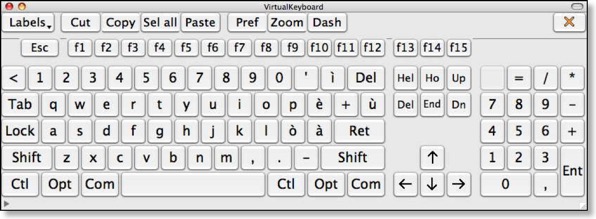To use VirtualKeyboard simply click on the keys of the on-screen keyboard and each keypress will be sent to the active application. It works seamlessly with all standard Mac applications allowing you to type virtually anywhere a hardware keyboard can be used. As with a real keyboard, to get uppercase characters you click Shift first, or to type in all uppercase, click Lock. Similarly, it handles command-key combinations, dead-keys, and modifier key - click combinations.
There are two versions of VirtualKeyboard:
- VirtualKeyboard 3.9 is a shareware application and can be freely used for 14 days. After this trial period, if you want to continue using it, you have to buy it. The registration fee is $19.95 for new users. VirtualKeyboard 3.9 is a free upgrade for all registered 3.x users.
VirtualKeyboard 3.9 runs on Intel-based Macs with Mac OS X 10.6 or higher, up to macOS 10.14.
Unfortunately, VirtualKeyboard is incompatible with MacOs 10.15 Catalina because it is a 32-bit application. Currently, the development environment with which I created this application prevents me from updating it, and therefore, I don't know if in the future I will still be able to do it.
- VirtualKeyboard 3.8.4 instead is a universal application and run on both PowerPC and Intel Macs.
VirtualKeyboard main features:
• Fully functional on-screen keyboard floating above other applications.
• Works with US and international keyboard layouts
• Offers four, fully resizable, keyboard models: extended, standard, reduced and mini.
• Handles command-key combinations, modifier key-click combinations and auto-key repeat.
• Provides an option that makes the keyboard transparent (0-90%) when you move the cursor away.
• "Labels" feature: you can type text you use frequently (like a return address, letter head, signature, ecc.) into all Mac OS X applications simply select it from Label menu.
• Provides various visual and audio-feedback features including speaking what you type (the latter option is built-in for English).
• Self-minimizing keyboard: this feature automatically reduces the keyboard size if it is not used for a determined period of time.
• Open contextual menus when the left mouse button is hold pressed.






